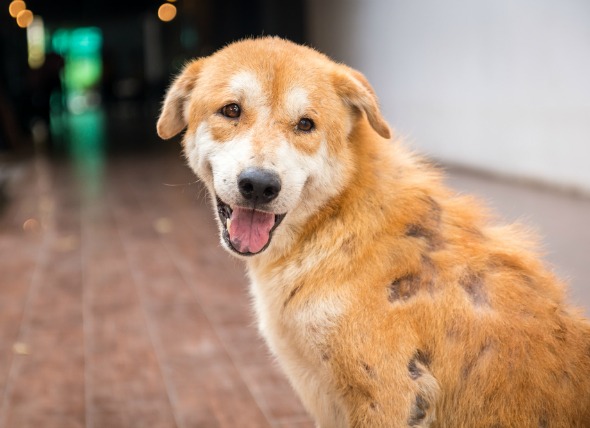Vet’s View
Rashes & bald patches mean a visit to vet
Q: My dog is shedding a lot—almost in patches. Is there a cause for concern? Sudhir Kumar
Dogs naturally lose old or damaged hair by shedding. What seems like excessive shedding can be normal for some dogs, but it can also be the result of stress, poor nutrition or a medical problem. Your veterinarian can best determine if your dog’s hair loss is part of the normal shedding process or is a symptom of an underlying disorder. Excessive shedding can sometimes be prevented through proper nutrition. Excessive hair loss or bald patches may be due to one of the following: Parasites (fleas, lice or mites); fungal or bacterial infections; Inhalant or food-related allergies; kidney, liver, thyroid or adrenal disease; pregnancy or lactation; certain medications; self-induced trauma due to licking; cancer; Immune disease; sunburn or contact with irritating or caustic substances. If you notice any of the following conditions, or if your dog’s initial skin problem persists for more than a week, consult with your veterinarian for treatment: Skin irritation, including redness, bumps, rashes or scabs; open sores of any kind; bald spots or thinning of coat; dull, dry hair that pulls out easily; scratching and constant foot licking or face rubbing.
Q: My six-month-old pet lab is too friendly with strangers. I have no idea how to teach him to leave people alone when they walk by. For some reason he fixates on certain people and must greet them. SK Singh
We tend to inadvertently create bad habits without realizing it. If you allow your dog to jump on you at home, you’re teaching him it’s okay to do it to strangers. In the mornings and when returning from work or the store, refuse to greet your puppy unless all four paws are on the floor. Once he’s got this down at home, then he’ll be ready to apply it outside your front door. Train your dog to respond to basic obedience commands like Sit, Stay, and Come. When out always carry treats or your pup’s favorite chew toy with you. Once he spots another person, draw his attention away. Teach your dog a release command – use the Stay command to have him hold a position until you release him. Practice your release command with other people around – have your dog hold a sit and stay for several seconds when approached by another person before releasing him to greet them. Teach your dog to look at you when you say his name – drill this one home with plenty of repetition. You can’t and shouldn’t expect to change your dog’s friendly nature or his temperament, but a little bit of extra training can go a long way in protecting your dog from potentially dangerous or embarrassing situations.
Q: I have a young GP. But, of late he is not eating the commercial food that I have been giving him. Ranjan Mehta
You can make dog food at home, using household ingredients like meats, fruits, and vegetables. In fact, a homemade diet could be healthier for your dog as the food may contain less preservative and additives. However, dogs have nutritional needs depending on their size, energy level, and age. Dogs need specific vitamins and minerals in their diet for optimal health. It is a good idea to talk over such requirements with your vet to make sure your choice of homemade dog food gets your dog these nutrients. If your dog has a specific health condition, your vet may want you to supplement your dog’s diet with dietary supplements. Eggs can be a good source of homemade protein for your dog, but you should never feed your dog raw eggs. Dogs need a diet comprised of protein, carbohydrates, and fiber in order to be healthy.
















Leave a comment